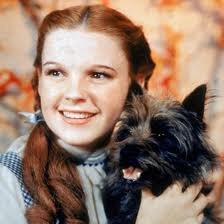
A rhinoceros (/raɪˈnɒsərəs/; from Ancient Greek (rhīnókerōs) 'nose-horned'; from ῥῑνός (rhīnós) 'nose', and κέρας (kéras) 'horn'), commonly abbreviated to rhino, is a member of any of the five extant species (or numerous extinct species) of odd-toed ungulates in the family Rhinocerotidae. (It can also refer to a member of any of the extinct species of the superfamily Rhinocerotoidea.) Two of the extant species are native to Africa, and three to South and Southeast Asia.
Rhinoceroses are some of the largest remaining megafauna: all weigh at least one tonne in adulthood. They have a herbivorous diet, small brains (400–600 g) for mammals of their size, one or two horns, and a thick (1.5–5 cm), protective skin formed from layers of collagen positioned in a lattice structure. They generally eat leafy material, although their ability to ferment food in their hindgut allows them to subsist on more fibrous plant matter when necessary. Unlike other perissodactyls, the two African species of rhinoceros lack teeth at the front of their mouths; they rely instead on their lips to pluck food.
Rhinoceros are killed by poachers for their horns, which are bought and sold on the black market for high prices, leading to most living rhinoceros species being considered endangered. The contemporary market for rhino horn is overwhelmingly driven by China and Vietnam, where it is bought by wealthy consumers to use in traditional Chinese medicine, among other uses. Rhino horns are made of keratin, the same material as hair and fingernails, and there is no good evidence of any health benefits. A market also exists for rhino horn dagger handles in Yemen, which was the major source of demand for rhino horn in the 1970s and 1980s.
The word rhinoceros is derived through Latin from the Ancient Greek: ῥῑνόκερως, which is composed of ῥῑνο- (rhino-, "nose") and κέρας (keras, "horn") with a horn on the nose. The plural in English is rhinoceros or rhinoceroses. The collective noun for a group of rhinoceroses is crash or herd. The name has been in use since the 14th century.
The family Rhinocerotidae consists of only four extant genera: Ceratotherium (white rhinoceros), Diceros (black rhinoceros), Dicerorhinus (Sumatran rhinoceros), and Rhinoceros (Indian and Javan rhinoceros). The living species fall into three categories. The two African species, the white rhinoceros and the black rhinoceros, belong to the tribe Dicerotini, which originated in the middle Miocene, about 14.2 million years ago. The species diverged during the early Pliocene (about 5 million years ago). The main difference between black and white rhinos is the shape of their mouths – white rhinos have broad flat lips for grazing, whereas black rhinos have long pointed lips for eating foliage. There are two living Rhinocerotini species, the Indian rhinoceros and the Javan rhinoceros, which diverged from one another about 10 million years ago. The Sumatran rhinoceros is the only surviving representative of the Dicerorhinini.
There are two subspecies of white rhinoceros: the southern white rhinoceros (Ceratotherium simum simum) and the northern white rhinoceros (Ceratotherium simum cottoni). As of 2013, the southern subspecies has a wild population of 20,405—making them the most abundant rhino subspecies in the world. The northern subspecies is critically endangered, with all that is known to remain being two captive females. There is no conclusive explanation of the name "white rhinoceros". A popular idea that "white" is a distortion of either the Afrikaans word wyd or the Dutch word wijd (or its other possible spellings whyde, weit, etc.,), meaning "wide" and referring to the rhino's square lips, is not supported by linguistic studies.
^white rhino is gray
The white rhino has an immense body and large head, a short neck and broad chest. Females weigh 4,000 lbs. and males 5,000 lbs. The head-and-body length is 11–15 ft and the shoulder height is 5.9–6.6 ft. On its snout it has two horns. The front horn is larger than the other horn and averages 35 inches in length and can reach 59 inches. The white rhinoceros also has a prominent muscular hump that supports its relatively large head. The color of this animal can range from yellowish brown to slate grey. Most of its body hair is found on the ear fringes and tail bristles, with the rest distributed rather sparsely over the rest of the body. White rhinos have the distinctive flat broad mouth that is used for grazing.
^ black rhino is also gray
The name "black rhinoceros" (Diceros bicornis) was chosen to distinguish this species from the white rhinoceros (Ceratotherium simum). This can be confusing, as the two species are not truly distinguishable by color. There are four subspecies of black rhino: South-central (Diceros bicornis minor), the most numerous, which once ranged from central Tanzania south through Zambia, Zimbabwe and Mozambique to northern and eastern South Africa; South-western (Diceros bicornis occidentalis) which are better adapted to the arid and semi-arid savannas of Namibia, southern Angola, western Botswana and western South Africa; East African (Diceros bicornis michaeli), primarily in Tanzania; and West African (Diceros bicornis longipes) which was declared extinct in November 2011. The native Tswanan name keitloa describes a South African variation of the black rhino in which the posterior horn is equal to or longer than the anterior horn.
An adult black rhinoceros stands 59–69 inches high at the shoulder and is 11–13 ft in length. An adult weighs from 1,870 to 3,530 lbs., exceptionally to 4,000 lbs., with the females being smaller than the males. Two horns on the skull are made of keratin with the larger front horn typically 50 cm long, exceptionally up to 140 cm. Sometimes, a third smaller horn may develop. The black rhino is much smaller than the white rhino, and has a pointed mouth, which it uses to grasp leaves and twigs when feeding.
During the latter half of the 20th century, their numbers were severely reduced from an estimated 70,000 in the late 1960s to a record low of 2,410 in 1995. Since then, numbers have been steadily increasing at a continental level with numbers doubling to 4,880 by the end of 2010. As of 2008, the numbers are still 90% lower than three generations ago.
to read more, go here: https://en.wikipedia.org/wiki/Rhinoceros
If you love ordering spring rolls from Chinese restaurants, then this is the recipe for you! Our spring rolls are easy to make and taste amazing. They're filled with a flavorful veggie mixture and fried until golden and crispy. They make a great appetizer or can be served right alongside some fried rice and your favorite takeout main dish!
- 1/2 cup soy sauce
- 1/4 cup packed light brown sugar
- 1 tablespoon ground ginger
- 2 teaspoons garlic powder
- 6 cups shredded Chinese cabbage
- 2 cups fresh bean sprouts
- 1 large carrot, shredded
- 3 scallions (green onions), chopped
- 12 spring roll or egg roll wrappers
- 1 egg, lightly beaten
- Oil for frying
- In a small bowl, combine soy sauce, brown sugar, ginger, and garlic powder; mix well.
- In a large bowl, combine cabbage, bean sprouts, carrot, and scallions; mix well. Pour soy sauce mixture over cabbage mixture; toss to coat well and let stand 10 minutes. Place cabbage mixture in a colander and squeeze to drain well.
- Spoon about 1/4 cup cabbage mixture evenly onto center of each egg roll wrapper. Lightly brush edges of egg roll wrapper with beaten egg. Fold one corner of each egg roll wrapper up over cabbage mixture then fold both sides over, envelope fashion; roll up tightly.
- Heat about 1-1/2 inches oil in a deep medium saucepan over medium-high heat until hot but not smoking. Add spring rolls in batches and fry 2 to 3 minutes per side, or until golden. Drain on a paper towel-lined platter. Serve immediately, but be sure to use caution -- the filling will be hot.
- To serve these like they do in Chinese restaurants, don't forget the dipping sauce! A couple of our favorite dipping sauces are duck sauce and spicy mustard.
- Did You Know?: In China, spring rolls are traditionally eaten during the Chinese New Year as a way to welcome in the spring. They're also said to represent wealth (because of their golden color). Spring rolls can vary in size, filling, and cooking method (some are fried, while others are steamed), from region to region. In the U.S., spring rolls and egg rolls are pretty similar, with the main difference being the filling. While both contain veggies, egg rolls typically include some kind of meat, chicken, or fish too.

1922 – Judy Garland, American actress and singer (d. 1969)

1982 – Tara Lipinski, American figure skater
Roll out the red carpet for one of the country’s ultimate comfort foods. National Egg Roll Day on June 10th delivers one American Dream story and satisfies a craving at the same time. You know you’re craving an egg roll now!
The egg roll began as a Chinese-American tradition that extended to Vietnamese immigrants reaching for the American Dream. These traditions grew from the unfailing dedication of families in chop suey palaces serving hungry workers. Restaurants across the country perfected their own versions of the egg roll with a variety of finely chopped ingredients – pork, shrimp, cabbage, onions, bamboo shoots, water chestnuts, and seasonings. And it was all rolled up in a thin pastry wrap and deep-fried.
The egg roll is a satisfying snack or an exciting part of a meal at home or away. But, it’s also played an essential role in making dreams come true for several generations of immigrants in the United States. And it continues to be in many ways.
Our ability to celebrate the egg roll is as close as our freezer, telephone, restaurant, or even our own recipe. The egg roll is versatile, too. Our love of the egg roll evolves to meet strict diets, exotic flavors, and so much more! What more could we ask for a celebration?
HOW TO OBSERVE National Egg Roll Day
Celebrate the hard-working history of the egg roll. Pick up a pack of Van’s Kitchen’s artisan batch egg rolls found in hundreds of grocers and convenience stores across the country. While you celebrate, enjoy them with your favorite someone.

NATIONAL EGG ROLL DAY HISTORY
 Van’s Kitchen founded National Egg Roll Day in 2019 to honor the company’s founding in June of 1986. Van and Kim Nguyen, two deserving Vietnamese immigrants, made their ultimate American Dream come to life with their passion for creating authentic egg rolls. Like many immigrant families before them, Van and Kim Nguyen came from Vietnam. Together, they established a home and family business in Dallas, Texas. They diligently hired hard-working employees, filling out paperwork in a language that was not their own. The Nguyens created a business model based solely on their greatest strength: making authentic egg rolls for those they love. Using only fresh, whole ingredients and crafting the egg rolls in artisan batches, Van’s Kitchen sets themselves apart by maintaining their decades-long commitment to making every bite the best one.
Van’s Kitchen founded National Egg Roll Day in 2019 to honor the company’s founding in June of 1986. Van and Kim Nguyen, two deserving Vietnamese immigrants, made their ultimate American Dream come to life with their passion for creating authentic egg rolls. Like many immigrant families before them, Van and Kim Nguyen came from Vietnam. Together, they established a home and family business in Dallas, Texas. They diligently hired hard-working employees, filling out paperwork in a language that was not their own. The Nguyens created a business model based solely on their greatest strength: making authentic egg rolls for those they love. Using only fresh, whole ingredients and crafting the egg rolls in artisan batches, Van’s Kitchen sets themselves apart by maintaining their decades-long commitment to making every bite the best one.










